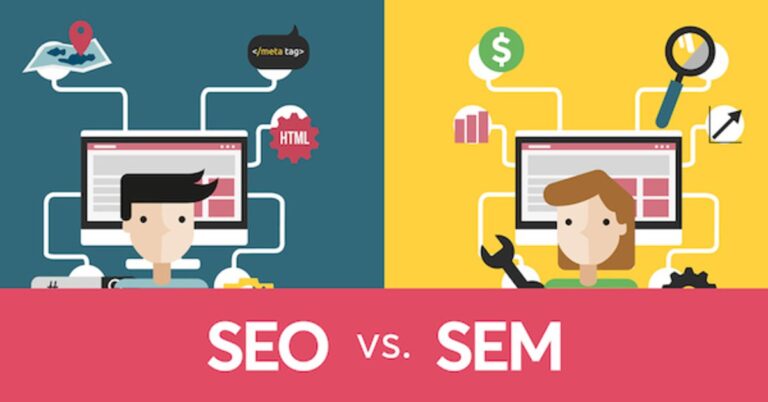|
Getting your Trinity Audio player ready...
|
Search engine optimization (also called SEO) and search engine marketing are two distinct aspects. When comparing SEM and SEO, though, you'll see that they have some overlap and variances.
Search engine optimization and search engine marketing: Similarities
- They both aid in the visibility of a brand in search engine results. One of the primary Search engine optimization and search engine marketing is that they both strive to assist a company in appearing in prominent places on search engine results pages (SERPs). Each strategy intends to assist a brand in appearing in search results when people look for phrases relating to the brand's industry, company, or offers.
- Both of these campaigns are focused on a small number of keywords. Both tactics are centered on focusing on specific keywords discovered via keyword research. Keywords are the foundation of any approach.
- Both need testing and optimization regularly. When weighing the pros and cons of SEM vs. SEO, remember that neither is a set-and-forget technique. They both need ongoing testing, monitoring, and adjustment to improve performance.
- They're both intended to increase blog readers. Both have the same goal. In that, they increase exposure on search engine results pages while also driving visitors to a website. Each method includes strategies to boost click-through rates (CTR) and encourage more people to click on search results.
Further Comparisons
- Both use keyword research to identify hot search phrases. Keyword research is the initial stage in SEM and SEO to determine which keywords to target. The study involves looking at keyword popularity to find the top keywords or purchase keywords that your target audience searches for. It also entails examining keyword competition to determine what other businesses are targeting the exact phrases and calculating what you'll need to do to compete.
- Knowing your target audience is essential in both cases. You'll need a thorough grasp of your audience and how they behave to excel at both techniques. You may get to know your audience learn their requirements and what they're looking for by employing buyer personas and psychographic segmentation. Then you may generate helpful content that appears when people hunt for answers to problems linked to your brand.
Search engine optimization and search engine marketing: Differences
- An “Ad” label appears in SEM search results. Not in the case of SEO. On the SERPs, search results generated by SEM or SEO display differently. Paid advertisements that appear as a consequence of SEM strategies are often identifiable as advertisements (e.g., by an icon next to the placement), while organic SEO search results are not.
- With time, SEO increases its value. Not in the case of SEM. SEM is only active if you pay to have your results shown. Your SEM campaign will end the moment you turn off your advertising. The polar opposite of SEO is content marketing. Over time, an SEO strategy matures and accumulates, leaving long-term benefits.
- SEO has a better CTR ( also called click-through rate) than SEM if you can get to the top. CTRs are typically highest in the first few organic search results. As a result, if you can get to the top, you'll almost certainly outperform SEM advertisements. However, if you come on the next page of results or below, SEM will likely get more clicks.
- Ad extensions are available in SEM search results. Snippets are shown in search results for SEO. Here, there are variances in the presentation of search results when comparing SEM with SEO. Ad extensions, which might contain additional links, phone numbers, and callouts, may appear in SEM search results. On the other hand, SEO results may show up in search as highlighted snippets.
More Differences
- For testing purposes, SEM is preferable to SEO. SEM-sponsored advertising is a beautiful method for testing since you can quickly switch them on and off. To test your new methods, you may instantly modify ad wording, target different audiences, and change the landing page content. This adaptability enables you to notice variations in your approach rapidly. This is impossible to do via SEO since making adjustments and tracking differences in outcomes would take too much time.
- SEM findings are only shown to a limited number of people. This is not the case with SEO outcomes. While effective SEO and SEM tactics are guided by a desire to engage with a specific target audience, SEM is the only way to narrow down that group. You may decide the target audience you want to view the search results for by applying filters based on age, location, wealth, habits, and more using SEM (depending on the publisher). You can't select who sees your search results if you're using SEO.
- SEM has an instantaneous effect. It takes time to optimize your website. You may start putting your findings in front of people using paid SEM advertisements with only a few clicks. Your advertisements appear in SERPs immediately when you initiate a campaign. You may switch advertisements on or off at any moment to increase or decrease their exposure. On the other hand, SEO takes time and effort to master. Before a brand ranks in search engines, it might take months to establish an SEO plan.





